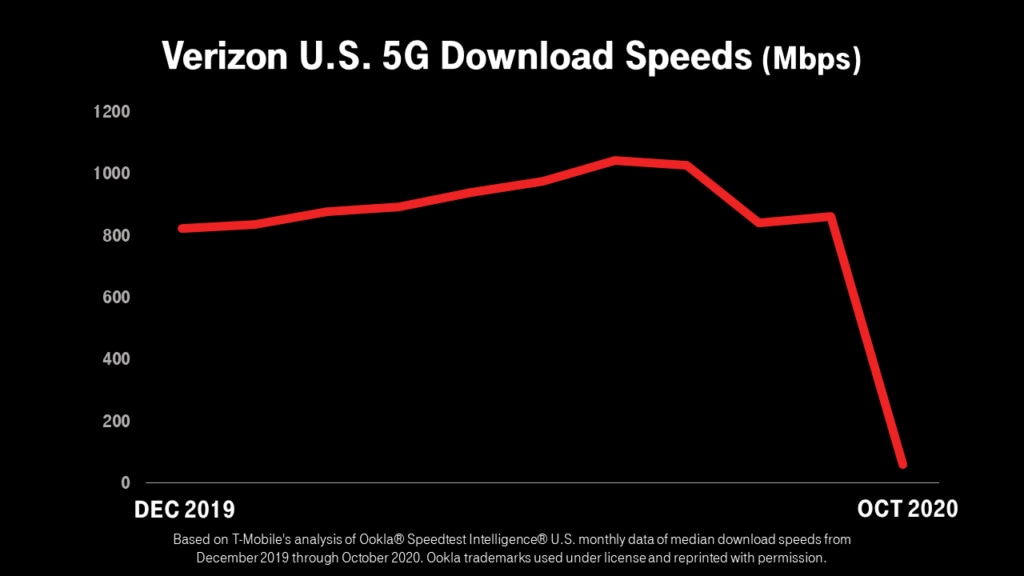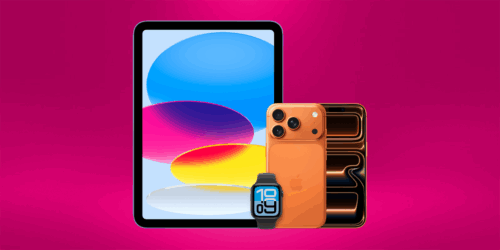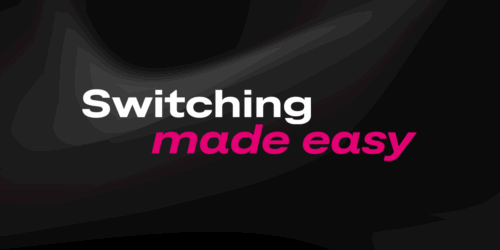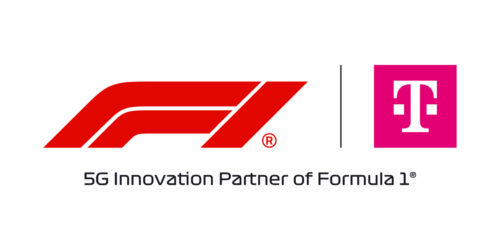Wow, a lot has happened in the world of wireless the past few months! T-Mobile overtook AT&T as America’s #2 provider, 5G went mainstream with all major smartphone makers now offering 5G devices, and Verizon (almost a year late to the party) finally reached nationwide 5G status. As we look at this changing landscape, one thing is clear: T-Mobile has the winning 5G strategy because only T-Mobile delivers BOTH 5G coverage and speed. And now that everyone finally has some meaningful coverage, we’re seeing that winning strategy play out as expected.
We’ve always considered ourselves to be the adult in the room on 5G. Our goal is to build 5G the right way and do right by our customers. And from what I’ve seen, that isn’t as true for our competitors. From AT&T’s misleading “5G E” that wasn’t even real 5G to Verizon claiming they have “5G Built Right”, it’s time to shed some light on the truth. Namely, Verizon. Verizon customers are getting a raw deal paying big bucks for a heavily marketed “Ultra Wideband” mmWave service that’s almost impossible to find and outside of that, a tiny nationwide footprint with speeds only comparable to LTE. Verizon spent two years building 5G with mmWave, and coverage is still available just 0.6% of the time, according to Ookla. But that hasn’t stopped Verizon from breathlessly claiming they have “5G Built Right.” It also hasn’t stopped them from saying “World’s Fastest 5G” when they aren’t even the fastest here in America anymore based on our analysis of independent, third party data. Shameless.
As of the beginning of October, Verizon still had incredibly fast speeds on mmwave but that changed when they launched their broader 5G footprint. While the speeds of Verizon’s millimeter wave (or “Ultra Wideband” as they market it) look impressive these speeds aren’t useful if they aren’t broadly available to customers. Round a corner or move a few feet putting an obstacle between you and the tower and the millimeter wave speed is gone. How useful is that – yep – not very useful at all!
So Verizon turned to Dynamic Spectrum Sharing (DSS) to add some kind of meaningful coverage to its 5G footprint. It allows both 4G and 5G to share the same spectrum and splits the capacity so each technology gets part of it, which can make things slower for everyone. Without adding new spectrum, Verizon’s nationwide 5G is going to perform very similar to LTE. If you don’t believe me, just ask Verizon’s CTO who said their nationwide 5G speeds are “most of the time, on par” with 4G. DSS has its place in 5G, but it should be used in limited scenarios — not to provide an entire nationwide footprint. Our analysis of the Ookla data shows this: Verizon now has the slowest median 5G download speeds in the industry since October 2020.
Verizon marketing their 5G as “5G Built Right” is a disservice to customers who expect 5G to deliver meaningful speed and coverage at the same time. And a woeful mismanagement of customer expectations.
Our 5G strategy couldn’t be more different, and we’ve been clear and transparent about it from the start. In early 2018, I first talked about the spectrum “layer cake” and how 5G requires dedicated spectrum across all three layers to deliver the best 5G experience — low band for broad coverage indoors and outside, mid band for coverage and blazing fast speed and high band for super-fast speeds in defined spaces, like campuses and stadiums. This “layered” approach, using multiple dedicated – not shared – spectrum bands, is the key to unlocking the transformational power of 5G with both coverage AND speed. Customers want fast and reliable speeds on the go, everywhere they go. Not just 0.6% of the time. And right now, T-Mobile is the only one in the US building 5G with both broad coverage and fast speeds.
T-Mobile 5G is built to delight, not disappoint. And customers are getting faster speeds all the time across the biggest 5G network in the America, now reaching 270 million people. Our 5G network is 3.5x bigger than Verizon’s. And now we’re adding a super-fast, high-capacity layer of mid-band 5G, already live in 410 cities and towns across the country, and we’ll reach 100 million people with mid-band by year-end. Where mid-band 5G is deployed, average download speeds are already around 300 Mbps with peaks up to 1 Gbps on capable 5G phones.
The best way to deliver 5G with broad coverage and speed at the same time is with T-Mobile’s ‘layer cake’ approach — dedicated 5G spectrum across all three bands — something Verizon and AT&T are both missing. After spending years on mmWave there must be some pretty concerned people at Verizon right now when they look at T-Mobile 5G.
The fact is, customers want faster speeds on the go, everywhere they go. Not just 0.6% of the time.
The 5G era is here, and we couldn’t be more proud to be out in front. We’re building at a furious pace, and we won’t stop.
Neville





